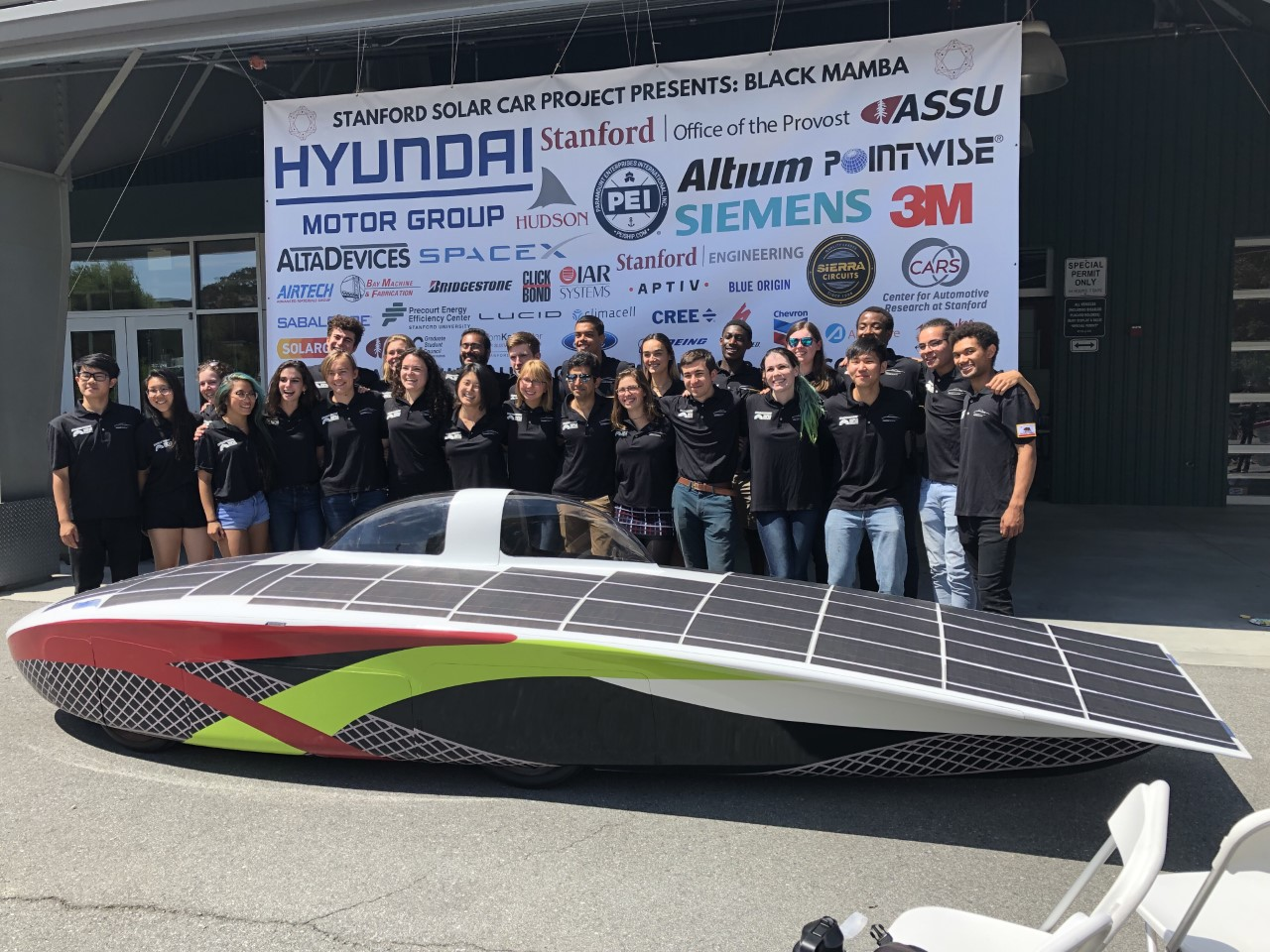The team members of the Stanford Solar Car Project (SSCP) took the fall quarter off from Stanford to participate in Australia’s Bridgestone World Solar Challenge. The challenge occurs every two years and consists of approximately 100 teams from over 30 countries that race to complete a 3000-km journey across Australia in their solar cars. The team had been working on their car, Black Mamba, for almost two years in preparation for the event.
Despite this preparation, a battery accident incapacitated the car on the first day of the competition on Oct. 13. As the car crossed the starting point of the competition in Darwin, Australia, the team started noticing some strange behavior.
“The car started shutting down on its own, and at one point, tried to reboot itself,” said Courtney Wenzel ’18, a second-year master’s student at Stanford and a battery and mechanical team member.
Although the team initially did not think much of this behavior, their assessment changed when the driver and passengers in the following car detected smoke coming from the side of the car.
“We immediately begin emergency procedures and removed the driver and the battery from the car,” said Temidayo Dairo ’20, the battery-team lead. The fire department then arrived and extinguished the resulting fire.
The team was forced to withdraw from the competition but continued to finish the race route while trailering the solar car behind them.
“The decision to withdraw was difficult, as we had a spare battery pack on hand that was well-tested. However, we wanted to allow time to thoroughly examine the car,” said Sarah Woodard ’19, a first-year coterm student at Stanford and the electrical-engineering lead.
The team kept their spirits high in spite of the circumstances, with Dairo adding, “It was disappointing not to have finished quite as we had hoped, but we still had fun driving down the outback and to the finish line. Our team had a way of creating happiness, positivity and laughter in even the most desperate circumstances, and that’s what I’ll remember most.”
Although the team has still not identified the cause of the fire, they had designed Black Mamba, named for its snake-like appearance, with a different design philosophy than previous years. They hoped their new structure would achieve better aerodynamics for the car.
“In previous years, we were doing catamaran-style cars, but this year we experimented with bullet cars. Unfortunately, this meant we had a lot less prior knowledge going into certain parts of the vehicle design,” Wenzel said.
Woodard pointed out that, although this experimentation allowed room for error, it was necessary.
“When building a solar car, there is no fixed answer,” Woodard said. “You make a design decision with your teammates, and you run with it. Sometimes you make it three months down the road only to realize you’ve made a mistake and need to start over. That’s the beauty of this experience. There really is no better way to learn.”
The team is not going to let this accident set them back.
“After a result like this, much of the team is hungry for a better finish, so you can expect to see some magic in 2021,” said Dairo. The next steps include re-engineering the car and fixing the battery.
“We are considering working on the car and entering it into the American Solar Challenge in July 2020. We are extremely excited for the future,” said Wenzel.
Contact Riya Sankhe at riyas ‘at’ stanford.edu.
